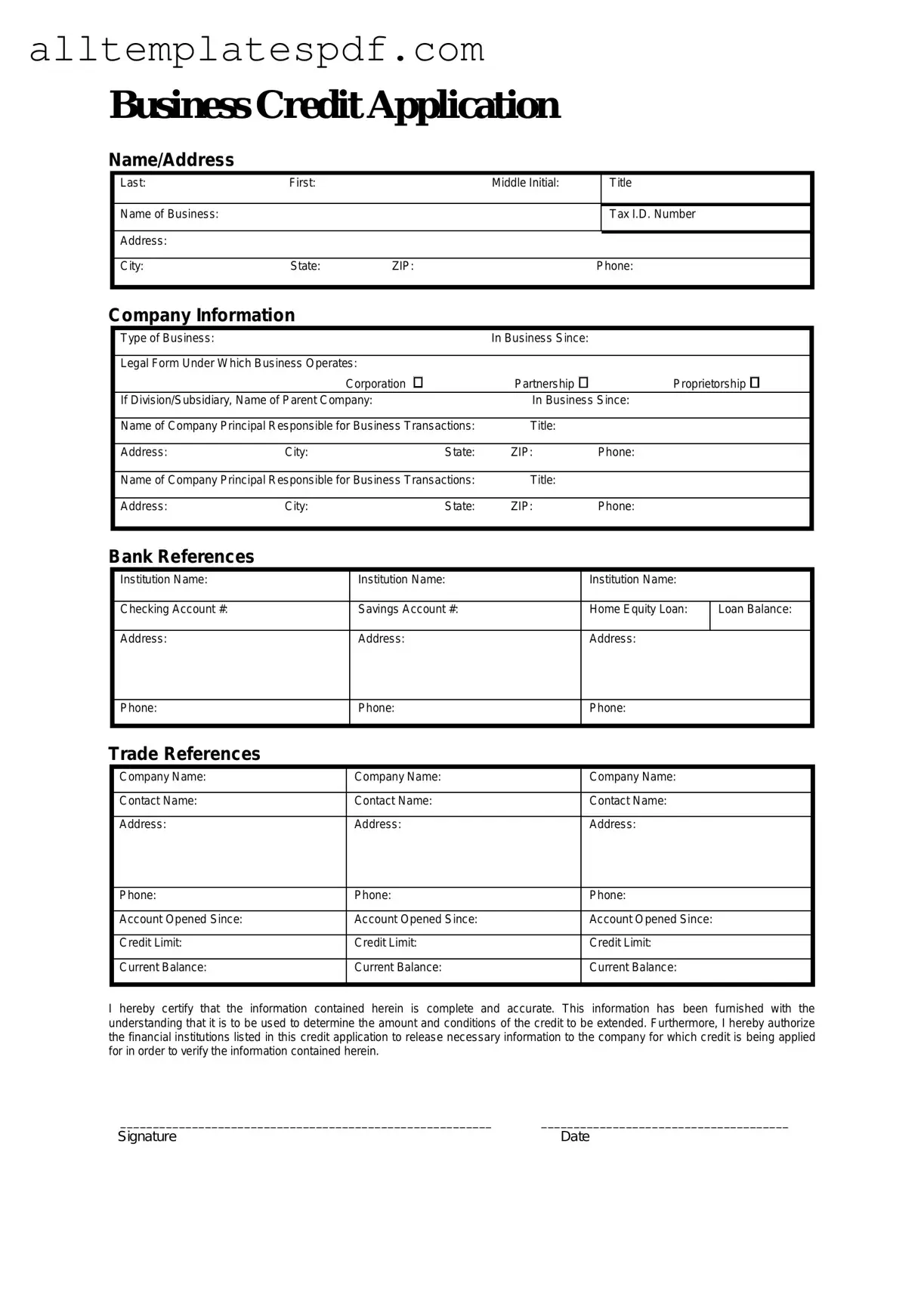Filling out a Business Credit Application form can be a daunting task, and many people inadvertently make mistakes that can hinder their chances of approval. One common error is providing incomplete information. When applicants leave out crucial details, such as business address or contact information, it raises red flags for lenders. They need a complete picture to assess the creditworthiness of a business.
Another frequent mistake involves inaccuracies in financial data. Misstating income or expenses can lead to a denial of credit. It's essential to provide precise figures. Double-checking these numbers ensures that they reflect the true financial state of the business.
Many applicants also fail to review their credit history before applying. Not knowing their credit score or having unresolved issues can result in unexpected denials. Understanding one’s credit profile allows for proactive measures to improve it before submitting an application.
In addition, some people neglect to read the fine print. The terms and conditions of the credit agreement often contain important information regarding interest rates and fees. Ignoring these details can lead to unpleasant surprises later on.
Another mistake is not tailoring the application to the specific lender. Each lender may have unique requirements or preferences. Customizing the application to align with these expectations can significantly enhance the chances of approval.
Providing outdated or irrelevant documentation is also a common pitfall. Lenders require current financial statements and tax returns. Submitting old documents can signal disorganization and may lead to delays or rejections.
Lastly, some applicants rush through the process. Taking the time to carefully fill out the application and ensuring all sections are completed can make a significant difference. A thorough approach reflects professionalism and attention to detail, qualities that lenders appreciate.
